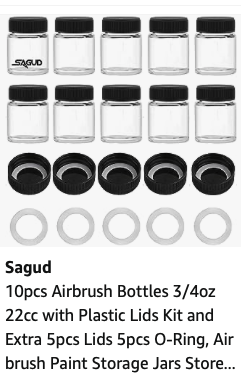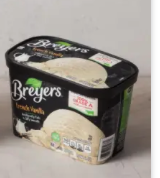In general, I am going to tell you that people worry too much about cleaning their airbrush(es). Especially in the beginning!
That said, my normal practice while working is to keep a glass of water, a small squeeze bottle with water, a soft bristled paint brush, a paper towel, and a little airbrush cleaner on hand.
Working with one color - I work as long as I please. I read elsewhere that you may be experiencing a small bit of blotching, or spotting when initiating paint flow. For these cases, if I suspect dry is starting to develop I keep a cotton swab wetted with cleaner on the edge of my desk. I just stick the cotton bud right onto the needle tip, and give it a light twist every so often to clean the tip of the needle. When I am done with color, I dump out any remaining. I will normally squirt some water into the cup, give it a good swirl with the paint brush that has been sitting in the glass of water, and dump it out. I will then add more water and spray it out. Add water, swirl with the brush and spray it out back flushing a little during the spray out. You can back flush by wadding the paper towel around the tip, while spraying. After a few back flushes spray into the paper towel to check for remaining color. If there is, add more water, and spray again - you may also at this point want to loosen the needle and work it back and forth with your fingers just enough to aid in cleaning the area around the needle packing - maybe 1/8" back and forth.. Spray on the paper towel to look for color. If at any time you are still seeing more color than you would thin, you can also ad the same reducer you used to the cup, and swirl with the paint brush to help break up any thicker deposits of remaining paint. Follow with water. When I stop seeing a lot of color on the paper towel, I will usually add cleaner to the brush, spray a little, then draw the needle out and wipe it clean. I repeat this with liquid in the cup until the needle comes out clean, then finish the spray out...
It took way longer to type this, and most probably longer to read than the actual practice will take when you do it. I usually will not take a brush apart to clean until I see performance decline. For someone just starting, it may be difficult to tell when it is user error vs. declining performance - most often is user error. It is part of the process of learning.


